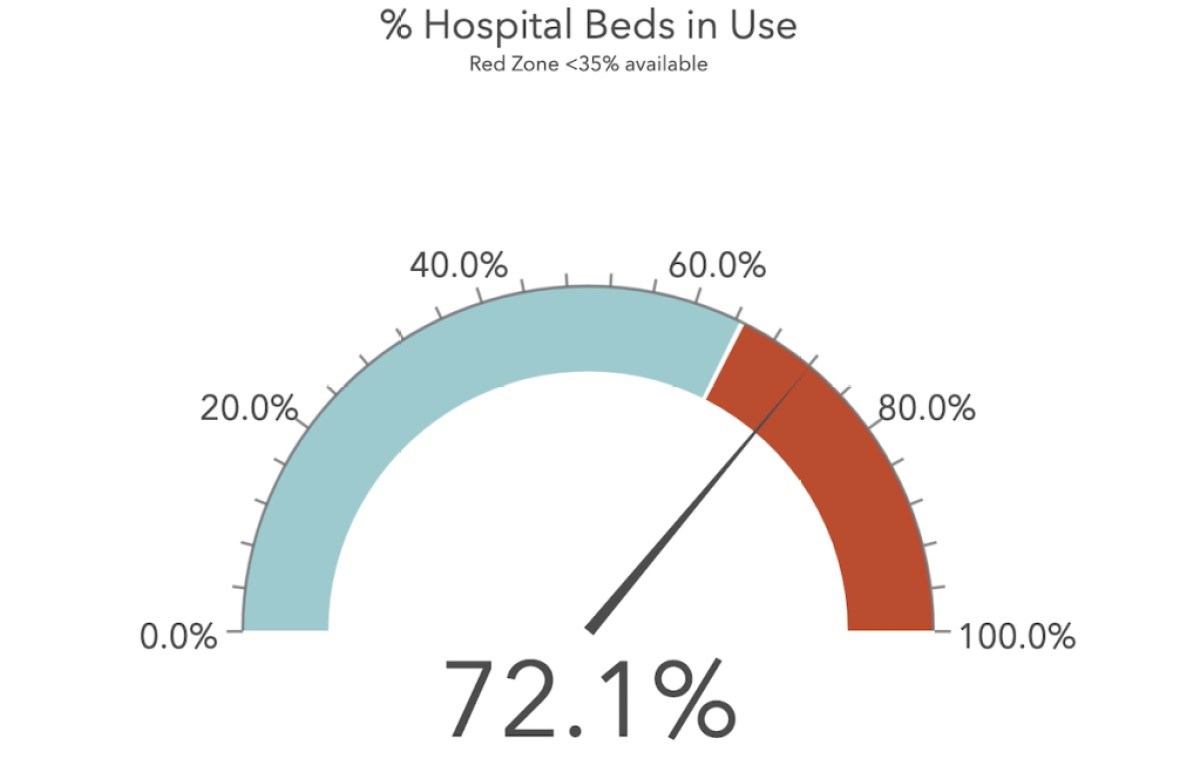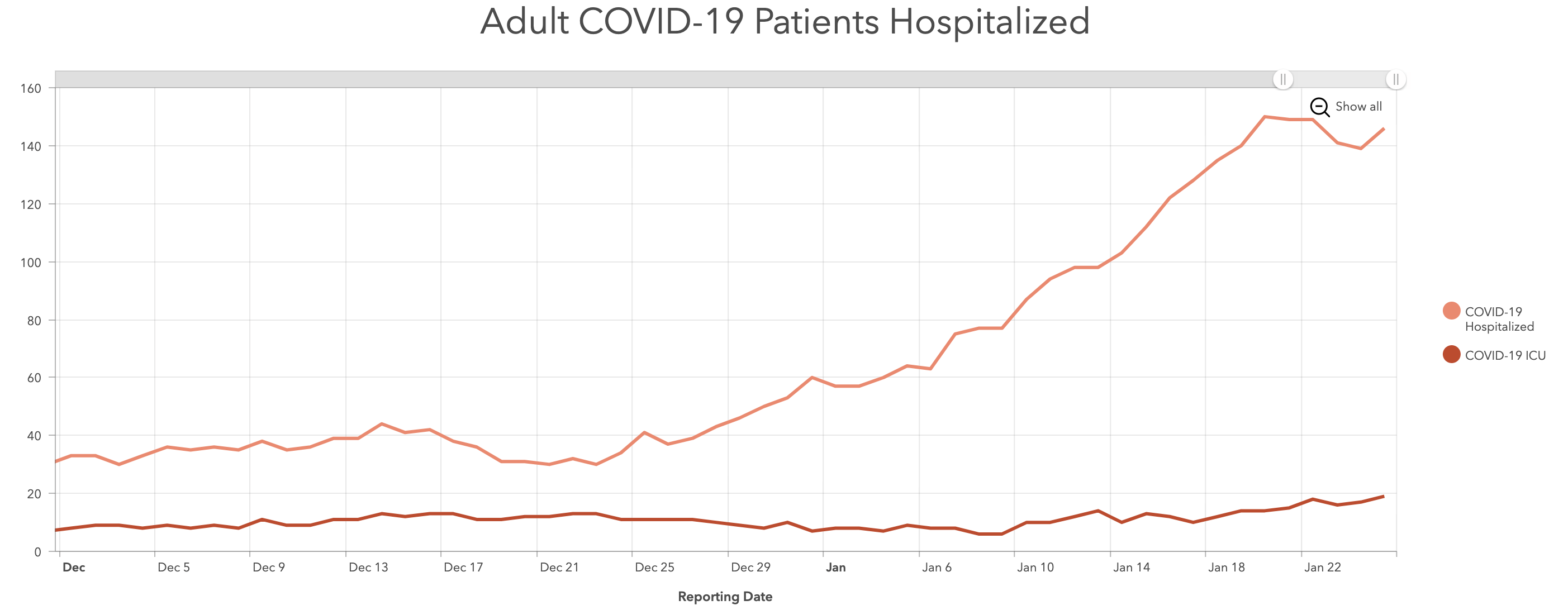Santa Barbara COVID Cases May Have Peaked
Hospitalizations Have Increased 309 Percent in Last Month
Two weeks ago, Santa Barbara’s County Supervisors heard dire new projections indicating more than 200 county residents could die from COVID in the following four weeks. This week, they heard from the same county public health officers — peeking out of the foxhole they’ve inhabited the past 22 months — who tentatively predicted the recent surge might have, in fact, peaked.
The grim good news was that only 781 new COVID cases were reported as of this Monday. By Tuesday, it was up at 837. On Sunday, it had been 1,066. On January 10, it was 1,546. But the real question is what load all this is placing on local hospitals.
And the real answer is a lot.
In the past month, the demand on the county’s inventory of 595 hospital beds increased by than 309 percent, stated county Public Health Director Van Do-Reynoso. The reassuring news is that the increased demand for beds in intensive-care units has not been nearly so intense. In the past month, those numbers went from 10 to 17. This reflects how the Omicron variant is much more infectious than any of the prior variants but also much less deadly. Still, it is deadly. In Santa Barbara, we’ve seen 10 new deaths in the past week. The county’s current death toll from the pandemic is now 590.
Because hospital and death rates tend to lag behind case rates, Do-Reynoso is cautiously optimistic. “It appears we may have peaked,” she told the supervisors. County Supervisor Gregg Hart, quick to seize upon an optimistic narrative, did just that. “It’s not that much longer to get to the other side,” he stated. “We’re going to get to a better place quick.” Supervisor Das Williams was more subdued in his assessment. “We’re not out of the woods yet,” he said. And Supervisor Steve Lavagnino suggested that the hospitalization numbers convey an exaggerated sense of urgency. Many of these patients, he said, only discovered they had COVID after checking in for something else.
Public Health Officer Dr. Henning Ansorg confirmed that 25-33 percent of all COVID admissions only discovered they were COVID positive after being admitted. Eight were pregnant women who showed up to give birth. But even so, this places a great strain on local hospitals, which he described as being very slammed.
Not only has demand for bed space increased dramatically, but the number of front-line health-care workers who are calling in sick because they tested positive has jumped as well. Less discussed is the number of health-care workers who show up for work after testing positive. Do-Reynoso said she’d heard from Cottage Hospital executives that the number of planned procedures was down to 25 percent of its normal volume in response to the COVID crunch.
Even with numbers trending in a positive direction, Do-Reynoso stressed the imperative for members of the community to test, social distance, wear masks, and get vaccinated. To that end, her department has ordered more than 200,000 home test kits. This past Saturday, more than 6,000 of these were passed out at a drive-through event her department held in Santa Maria. They were gone within two hours. To be fully vaccinated now, she said, required booster shots as well. The effectiveness of vaccines, she cautioned, wanes significantly after six months. “We have to maintain our vigilance,” she said. “That’s very critical as the peak continues to decline.”
At the Santa Barbara Independent, our staff continues to cover every aspect of the COVID-19 pandemic. Support the important work we do by making a





You must be logged in to post a comment.